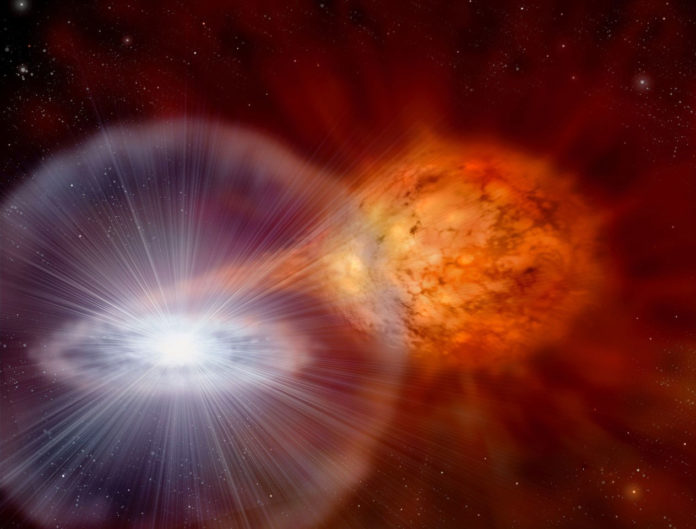Lithium and its compounds have several industrial applications, including heat-resistant glass and ceramics, lithium grease lubricants, batteries, and mood-altering chemicals.
However, scientists are curious to know where this element comes from. Understanding the sources of the elements out of which our bodies and the solar system are made is essential.
A new study has suggested that a class of stellar explosions, called classical novae, are responsible for most of the lithium in our galaxy and solar system. To reach this conclusion, a team of scientists has combined theory with both observations and laboratory studies.
They discovered that a fraction of these classical novae would evolve until they detonate as supernovae of type Ia. These exploding stars become more splendid than a galaxy and can be found at vast distances in the universes.
This way, they are being utilized to contemplate the evolution of the universe and were the supernovae used in the mid-1990s to discover dark energy, which is causing the expansion of the universe to accelerate. They additionally produce a significant part of the iron in the galaxy and solar system, a vital constituent of our red blood cells, which convey oxygen all through the body.
Scientists used several methods to determine the amount of lithium produced in a nova explosion. They combined computer predictions of how the explosion creates lithium, how the gas is ejected and what its total chemical composition should be, along with telescope observations of the ejected gas, to measure the composition.
Computer codes were used to simulate the explosions to obtain data on nova explosions using ground-based telescopes, orbiting telescopes and the Boeing 747 NASA observatory called SOFIA.
Co-authors and nuclear astrophysicists Christian Iliadis of the University of North Carolina at Chapel Hill and W. Raphael Hix of the Oak Ridge National Laboratory and the University of Tennessee, Knoxville provided insight into the nuclear reactions within stars that were essential to solving the differential equations needed for this study.
Astrophysicist Sumner Starrfield of Arizona State University said, “Our ability to model where stars get their energy depends on understanding nuclear fusion where light nuclei are fused to heavier nuclei and release energy. We needed to know under what stellar conditions we can expect the nuclei to interact and what the products of their interaction are.”
Co-author and isotope cosmochemist Maitrayee Bose of ASU’s School of Earth and Space Exploration analyzes meteorites and interplanetary dust particles that contain tiny rocks that formed in different kinds of stars.
“Our past studies have indicated that a small fraction of stardust in meteorites formed in novae. So the valuable input from that work was that nova outbursts contributed to the molecular cloud that formed our solar system.”
“The research is predicting particular compositions of stardust grains that form in nova outbursts and have remained unchanged since they were formed.”
Starrfield said, “This is ongoing research in both theory and observations. While we continue to work on theories, we’re looking forward to when we can use NASA’s James Webb Space Telescope and the Nancy Grace Roman Telescope to observe novae and learn more about the origins of our universe.”
Journal Reference:
- Sumner Starrfield et al., Carbon–Oxygen Classical Novae Are Galactic 7Li Producers as well as Potential Supernova Ia Progenitors. DOI: 10.3847/1538-4357/ab8d23
